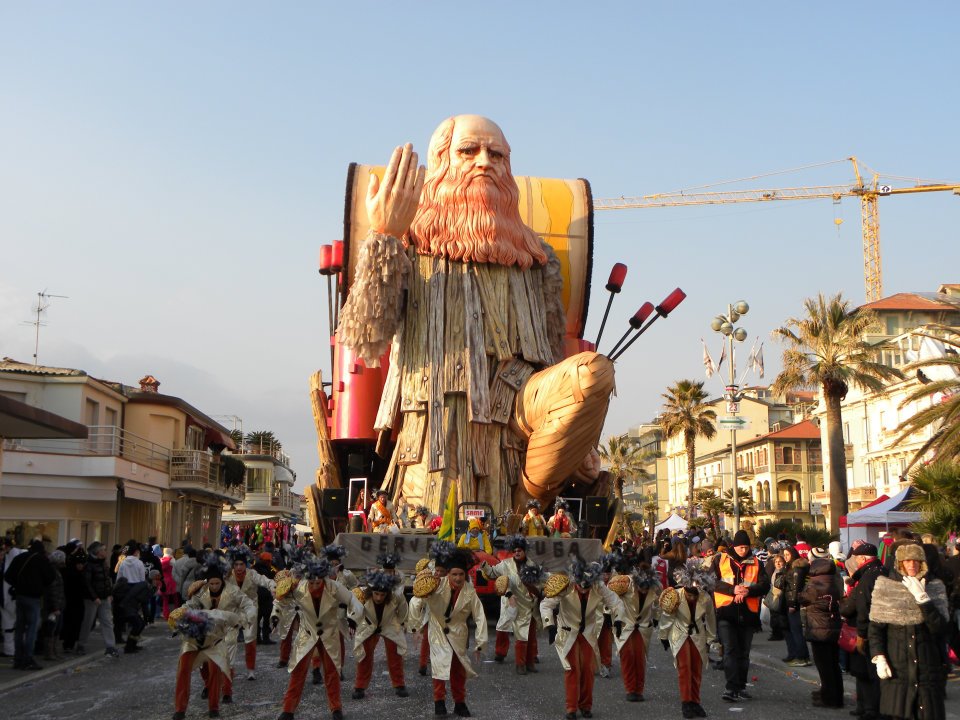Colorful and playful, carnival is a festival whose origins are very ancient. Widespread in all countries of Catholic tradition, has always represented a moment of celebration and leisure. That transgression that made it possible for a while to go beyond the rules. And then masks, colors, fiction and mockery appear. Almost everything is allowed. A quick tour of the Italian regions will allow us to get to know the most famous carnivals of our peninsula.
Proceeding in stages
Starting from the North, in our journey in search of the best known carnivals, we cannot but mention two regions. Piedmont and Veneto. So let's start with the carnival of Ivrea, a Piedmontese city. It is a very characteristic celebration that sees a fruit as the protagonist. Everyone in fact remembers him for the famous battle of the oranges. Literally launched through the streets of the center, this practice takes up a historical event. In fact, during the Middle Ages a guerrilla war took place between the people and the Castle. Riots who proceeded on foot targeting the royal guards with oranges. A rebellion spokesperson for a sacred concept. "Freedom on all and for all".

How not to praise the infamous Venice carnival? Refined and elegant but also the triumph of craftsmanship. The masks are real masterpieces of art. But there is more. In fact, the event that takes place every year in Piazza San Marco is particular. Known as the flight of the angel", is the opening ritual of the Venice carnival. Its origin is from the sixteenth century and began when a Turkish acrobat reached the belfry of Saint Mark. The athlete walked on a long rope with the help of a barbell. On the way down he reached the Doge's Palace, paying homage to the Doge. The tradition continued over time with numerous variations up to the current version. Today the protagonist of the flight is the winner of the beauty contest of the Marie of the previous year.
Center of Italy
Moving to the regions of central Italy, we meet two of the best known carnivals. One is undoubtedly that of Viareggio, in Tuscany. Animated by floats with large papier-mâché sculptures, it is among the best known events in Europe. They pass along the promenade along a path of about two kilometers. The protagonists are the huge satirical depictions with political and social content. Also in this case it is an ancient tradition that interested the nineteenth-century bourgeoisie. Men wearing masks to protest the high taxation of the time.

Let's resume our tour and move a little further east. We will run into the carnival of Cento. It takes place in Emilia Romagna and is among the most transgressive in Europe. Brightly colored costumes, allegorical floats with plush throws among the crowd and masked groups engaged in articulated choreography. A carnival that the well-known painter Guercino already talks about. His is the seventeenth-century painting that portrays celebrations in the city.
To the south
We land in Puglia, in the province of Bari to meet the Putignano carnival. Based on the allegory of current issues, it is symbolized by the city mask. It is Farinella, a joker who wears the typical pointed hat with rattles, multicolored dress and shoes with bells. We now cross a stretch of sea and arrive in Sicily. Two of the most famous carnivals. The more than one hundred years old of Sciacca and the popular one of Acireale.

The first stands out above all for the artistic beauty of the allegorical floats. Real handicraft works whose preparation takes up the whole year. Another peculiarity is given by the animated structures. Imposing and able to move, they dominate the wagons. The tributes given to the crowd are also important: candy, sausage and wine. Finally, the carnival of Acireale. Defined the most beautiful in Sicily, is represented by large papier-mâché works designed by masters of satire and skilled craftsmen. At one time the wagons were replaced by cars adorned with flowers and citrus fruits. They paraded in disguise old Fiat 500 and other models all with the Turin brand.





